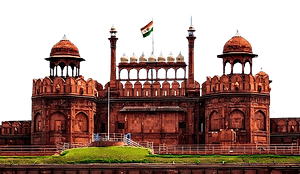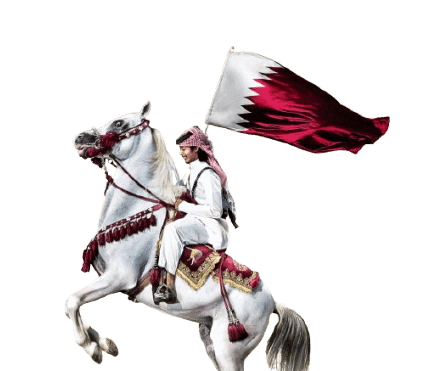India A Comprehensive Biography

India a land of timeless civilization, cultural diversity, and historical grandeur, has been one of the oldest inhabited regions in the world. Often referred to as the “cradle of civilization,” India’s journey from the Indus Valley to a modern republic is rich, layered, and intricate. The story of India is not just about its vastness or its colorful traditions—it’s about its people, its rulers, its resilience, and the long, hard road to independence.
Ancient India: Cradle of Civilization (3300 BCE – 500 BCE)
India’s earliest civilization, the Indus Valley Civilization, emerged around 3300 BCE in regions that today span across northwestern India and Pakistan. The cities of Harappa and Mohenjo-Daro exhibited remarkable urban planning, drainage systems, and trading prowess.
Following the decline of the Indus Valley around 1300 BCE, India saw the arrival of the Aryans. The Vedic Period (1500–500 BCE) began, laying the foundations of Hinduism, Sanskrit literature, and the caste system. This era was not politically unified but consisted of tribal communities ruled by rajas.
The Mahajanapadas and Rise of Empires (500 BCE – 320 BCE)
By the 6th century BCE, India was home to 16 powerful kingdoms known as the Mahajanapadas, including Magadha, Kosala, Kuru, and Gandhara. During this time, two major religions—Buddhism and Jainism—emerged, advocating peace and non-violence.
The Mauryan Empire (322 BCE – 185 BCE)
Founded by Chandragupta Maurya, the Mauryan Empire was the first pan-Indian empire. Under the guidance of the brilliant strategist Chanakya, Chandragupta unified large parts of India. However, the empire’s most notable ruler was Ashoka the Great (269–232 BCE), who after the bloody Kalinga War, embraced Buddhism and spread its teachings across Asia. Ashoka’s edicts carved in stone pillars still stand today as testimonies to his rule.
Post-Mauryan Period and Regional Kingdoms (185 BCE – 320 CE)
After the decline of the Mauryas, India fragmented into several smaller kingdoms and saw the rise of the Shungas, Satavahanas, and foreign invasions from Greeks, Scythians, and Kushans. Despite political disunity, trade, art, and architecture flourished. The Kushan Emperor Kanishka was a great patron of Buddhism.
The Gupta Empire (320 CE – 550 CE): Golden Age of India
The Gupta Empire, established by Chandragupta I, ushered in a golden age of Indian science, literature, astronomy, and mathematics. Under rulers like Samudragupta and Chandragupta II, India saw the works of Kalidasa, the advancements in medicine by Charaka, and the development of the concept of zero by Aryabhata. The empire fell due to invasions by the Hunas.
Medieval India and Islamic Invasions (550 CE – 1206 CE)
After the Guptas, India saw the rise of regional kingdoms like the Chalukyas, Palas, Rashtrakutas, and Cholas. While the north remained fragmented, the Chola dynasty in the south expanded its influence into Southeast Asia. During this period, Islam entered India through Arab traders and later through invasions.
India Delhi Sultanate (1206 – 1526)
The establishment of the Delhi Sultanate marked the beginning of Islamic rule in India. Starting with Qutb-ud-din Aibak, the Mamluk Dynasty, Khiljis, Tughlaqs, Sayyids, and Lodis ruled Delhi successively. The Delhi Sultanate saw the blending of Indo-Islamic architecture, Sufism, and Persian culture with Indian traditions.
Mughal Empire (1526 – 1857)
Babur, a descendant of Timur and Genghis Khan, defeated Ibrahim Lodi in the First Battle of Panipat (1526), founding the Mughal Empire. His grandson, Akbar the Great, consolidated Mughal rule across India through diplomacy, warfare, and religious tolerance. Akbar’s court included scholars from all religions, and he attempted to create a syncretic faith called Din-i-Ilahi.
His successors, Jahangir, Shah Jahan, and Aurangzeb, expanded the empire further. The Mughal Empire contributed significantly to art, architecture (Taj Mahal), literature, and administration. However, excessive centralization, religious intolerance under Aurangzeb, and internal strife weakened it.
Regional Powers and Decline of Mughals (1707 – 1857)
After Aurangzeb’s death in 1707, the Mughal Empire began to disintegrate. Regional powers such as the Marathas, Sikhs, Nizam of Hyderabad, and Mysore under Tipu Sultan rose to prominence. The British East India Company began gaining foothold by exploiting regional conflicts.
British Rule in India (1757 – 1947)
East India Company Rule (1757 – 1858)
The Battle of Plassey (1757) marked the beginning of British political dominance. The East India Company, initially a trading company, became a de facto ruler. Policies like Doctrine of Lapse and Subsidiary Alliance weakened Indian princely states.
Notable events:
- Battle of Buxar (1764) consolidated British power in Bengal.
- Tipu Sultan of Mysore resisted until 1799.
- Punjab annexed after the Anglo-Sikh Wars (1845–1849).
First War of Independence (1857)
Also known as the Sepoy Mutiny, it was India’s first large-scale rebellion against British rule. Led by Mangal Pandey, Rani Lakshmibai, Tatya Tope, and Bahadur Shah Zafar, the revolt was brutally crushed. However, it ended East India Company rule and led to direct British Crown rule.
British Raj (1858 – 1947)
Queen Victoria was declared the Empress of India in 1876. British governance modernized infrastructure but exploited Indian resources and labor.
Key developments:
- Formation of Indian National Congress (INC) in 1885.
- Partition of Bengal (1905) sparked protests, later annulled.
- Rise of revolutionary movements and Swadeshi campaigns.
Freedom Movement and National Awakening
Leaders and Their Contributions
- Mahatma Gandhi: Led the Non-Cooperation Movement (1920), Salt March (1930), and Quit India Movement (1942) using non-violence (Satyagraha).
- Jawaharlal Nehru: Promoted modern education, science, and was India’s first Prime Minister.
- Subhas Chandra Bose: Formed the Azad Hind Fauj (INA), sought help from Axis powers during WWII.
- Bhagat Singh, Rajguru, Sukhdev: Became symbols of youth rebellion through acts of resistance and martyrdom.
- Dr. B. R. Ambedkar: Fought for Dalit rights, architect of the Indian Constitution.
- Sardar Vallabhbhai Patel: United princely states post-independence.
- Maulana Abul Kalam Azad, Annie Besant, Gopal Krishna Gokhale, Bal Gangadhar Tilak, and Lala Lajpat Rai were instrumental in awakening nationalist consciousness.
Independence and Partition (1947)
India gained independence on 15 August 1947, after more than 200 years of colonial rule. The joy was marred by the Partition of India, leading to the creation of Pakistan and a bloody communal riot that killed millions and displaced more.
Lord Mountbatten was the last British Viceroy. Jawaharlal Nehru became Prime Minister, and Dr. Rajendra Prasad became the first President.
Post-Independence India
India adopted its Constitution on 26 January 1950, becoming a sovereign, socialist, secular, democratic republic. It faced enormous challenges—poverty, illiteracy, linguistic divisions—but emerged resilient.
Key highlights:
- Green Revolution transformed agriculture.
- White Revolution made India the largest milk producer.
- ISRO made strides in space exploration.
- IT boom in the 1990s turned India into a global tech hub.
Rulers of India: Summary of Major Empires
| Ruler/Empire | Period | Notable Achievements |
| Indus Valley Civilization | 3300–1300 BCE | Urban planning, trade |
| Maurya Empire | 322–185 BCE | Unification under Chandragupta, Ashoka’s Buddhism |
| Gupta Empire | 320–550 CE | Golden age of science and art |
| Chola Empire | 850–1250 CE | Maritime trade, temple architecture |
| Delhi Sultanate | 1206–1526 | Indo-Islamic culture, Persian influence |
| Mughal Empire | 1526–1857 | Architecture, literature, centralized administration |
| British Raj | 1858–1947 | Infrastructure, education, but also exploitation |
India’s Geographical and Demographic Profile
Geographical Area
India covers a total area of approximately 3,287,263 square kilometers, making it the seventh-largest country in the world.
- Borders: Pakistan, China, Nepal, Bhutan, Bangladesh, and Myanmar.
- Coastline: 7,516.6 km
- States and UTs: 28 states and 8 union territories
Population
As of 2024, India’s estimated population is 1.44 billion, making it the most populous country in the world, surpassing China.
- Population Density: Approx. 464 people per sq km
- Languages: 22 official languages; Hindi is widely spoken.
- Religions: Hinduism (79.8%), Islam (14.2%), Christianity (2.3%), Sikhism, Buddhism, Jainism
Social and Cultural Influence
India is a cultural superpower. Its influence is seen in:
- Cinema: Bollywood is one of the world’s largest film industries.
- Cuisine: Indian food is popular globally.
- Spirituality: Yoga, Ayurveda, and meditation have global followers.
- Festivals: Holi, Diwali, Eid, Christmas, and others reflect its pluralistic ethos.
Cultural and Scientific Contributions
- Yoga and Ayurveda originated in India.
- Mathematicians like Aryabhata, Brahmagupta contributed to algebra and astronomy.
- Chess, Zero, Decimal System, and Sanskrit literature are Indian gifts to the world.
- Architectural marvels include Taj Mahal, Sun Temple, Meenakshi Temple, Qutub Minar.
Conclusion
India’s journey from ancient civilization to modern republic is a saga of resilience, cultural fusion, and indomitable spirit. Every era—be it Mauryan or Mughal, colonial or post-independence—has shaped its identity. The fight for freedom was not led by one, but by millions. And today, with its vast population, thriving democracy, and cultural diversity, India stands as a beacon of ancient wisdom and futuristic potential.




4 thoughts on “The Making of India History Independence National Identity”